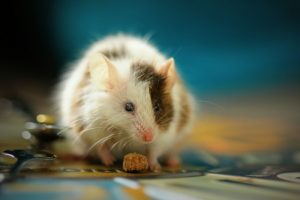Detecting Infestations: Signs to Look for During Home Inspections
Home inspections are a crucial step in the process of buying or selling a property. They provide buyers with valuable insights into the condition of a home, helping them make informed decisions about their investment. While many aspects of a home inspection are readily apparent, certain hidden issues can go unnoticed without a trained eye. Building inspection Melbourne and other experts will tell you that one such issue is the presence of pests. It can cause significant damage to a property if left unchecked. Below are details of the signs to look for during home inspections that may indicate the presence of a pest infestation.
Visual Evidence
One of the most obvious signs of a pest infestation is visual evidence of the pests themselves. During a house inspection, look for any evidence of insects or rodents, such as droppings, nests, or carcasses. Pay close attention to areas where pests are known to congregate, such as basements, attics, and crawl spaces.
Damage to Property
Pests can cause extensive damage to a home’s structure and belongings. Look for signs of gnawing or chewing on wood, wires, insulation, and other materials. Termite damage, in particular, may manifest as hollow-sounding wood or tiny holes in walls and furniture. Additionally, be on the lookout for damage to fabrics, upholstery, and stored items, which may indicate the presence of moths or carpet beetles.
Foul Odors
Certain pests can emit foul odors that linger in a home. During the inspection, be wary of any musty or ammonia-like smells, especially in enclosed spaces like closets, cabinets, and pantries. These odors may indicate the presence of urine, feces, or decaying matter left behind by pests.
Tracks and Trails
Pests often leave behind trails or tracks as they move about a property. Look for signs of greasy smudges along baseboards, walls, and floors, which may indicate the presence of rodents. Similarly, keep an eye out for tiny footprints or droppings in secluded areas, such as behind appliances or beneath sinks.
Sounds of Activity
During the inspection, listen for any unusual sounds that may indicate pest activity. Rodents, in particular, may be heard scurrying or scratching inside walls, ceilings, or floors. Additionally, pay attention to any rustling or chewing noises coming from attics or crawl spaces, as these may be signs of wildlife infestations.
Exterior Clues
While much of the inspection focuses on the interior of the home, it’s also important to inspect the exterior for signs of pest activity. Look for holes or gaps in the foundation, walls, and roof where pests could enter the home. Additionally, check for signs of nesting or burrowing around the perimeter of the property, such as mounds of dirt or chewed vegetation.

Water Damage
Pests are often attracted to moisture-rich environments so that water damage can increase the likelihood of infestations. During the inspection, be on the lookout for signs of water damage. Mold and mildew growth, as well as damp or musty odors, may also indicate areas of concern.
Conclusion
Detecting pest infestations during home inspections requires a good eye for detail and an understanding of the signs to look for. By paying attention to visual evidence, property damage, odors, tracks, sounds, exterior clues, and water damage, inspectors can identify potential issues early on, allowing homeowners to address them before they escalate. Ultimately, a thorough inspection is essential for ensuring the safety, integrity, and value of a home for both buyers and sellers alike.


